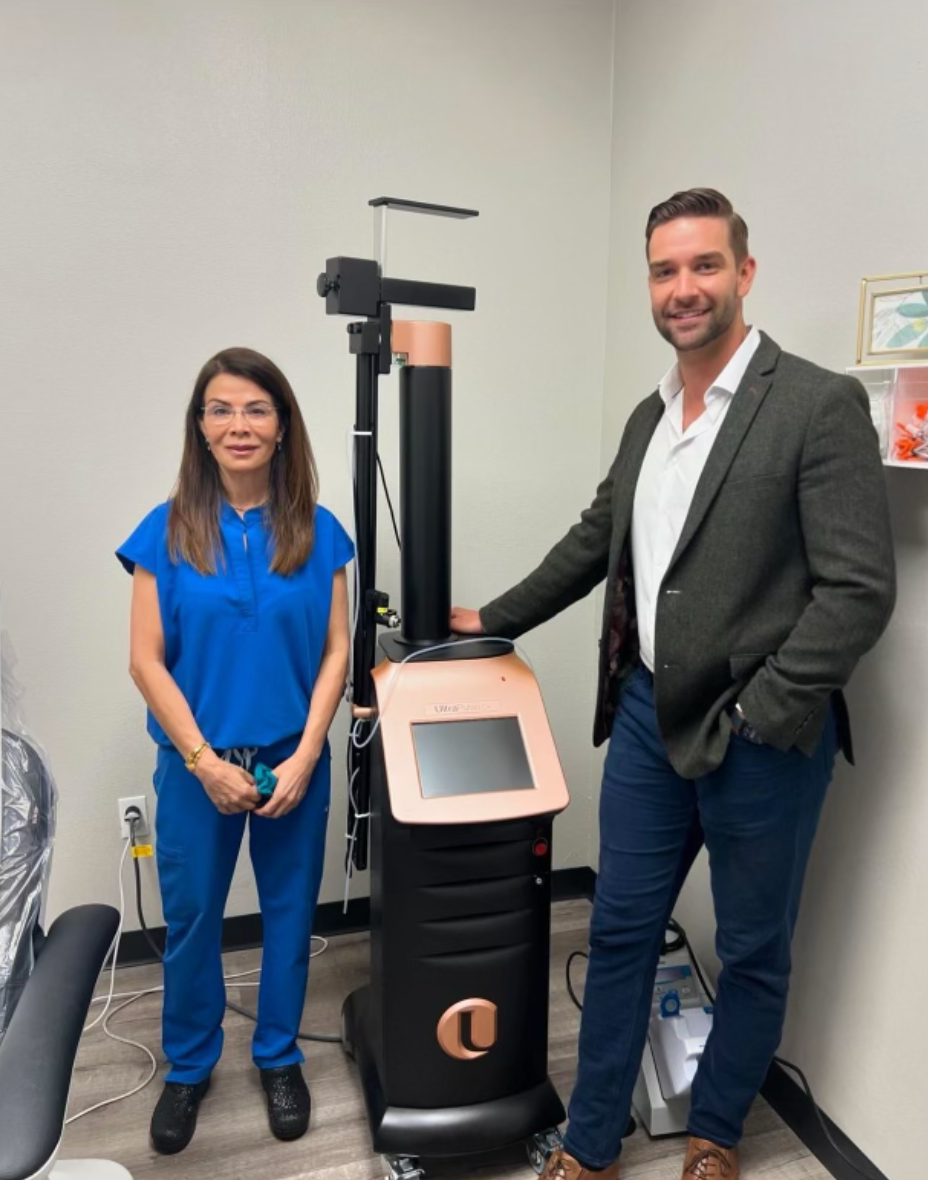If you’ve noticed leg pain, swelling, heaviness, or visible veins—don’t ignore them. These could be signs of vein disease, a progressive medical condition that worsens over time without proper care. At the Vein & Aesthetic Center, we emphasize early detection, and that starts with a simple, non-invasive ultrasound.
What is Vein Disease?
Vein disease, or chronic venous insufficiency (CVI), occurs when the valves in your leg veins weaken or fail. These valves are supposed to keep blood flowing up toward the heart. When they don’t work properly, blood pools in the legs, leading to symptoms like:
- Leg fatigue or heaviness
- Swelling in the ankles or calves
- Aching, throbbing, or itching
- Bulging varicose or spider veins
- Skin discoloration or ulcers (in advanced stages)
Vein Disease is Progressive
Many people think vein issues are only cosmetic—but that’s far from the truth. Without treatment, the symptoms worsen over time. What starts as mild swelling or visible veins can develop into serious complications, including:
- Chronic leg pain and skin changes
- Venous stasis dermatitis (inflammation and skin breakdown)
- Leg ulcers that are painful and slow to heal
- Deep vein thrombosis (DVT), which is potentially life-threatening
That’s why it’s so important not to “wait and see.” Early evaluation is key.
Why Ultrasound is the First Step
A venous ultrasound is the gold standard for diagnosing vein disease. It’s a painless, non-invasive scan that allows our specialists to see how blood is flowing through your veins. We use this to:
- Identify valve failure or venous reflux
- Detect blood clots or obstructions
- Map out the structure of your deep and superficial vein systems
- Determine the severity of the disease and which treatments will work best
- Measure vein sizes and reflux
Your ultrasound results help us build a personalized treatment plan that may include minimally invasive options like radiofrequency ablation, Varithena injections, sclerotherapy, or compression therapy.
Understanding Vein Size and Reflux: What It Means for Your Vein Health
When it comes to diagnosing and treating vein disease, there are specific ultrasound criteria that help determine if a vein is considered abnormal and needs treatment. One of the most important things we look at is vein diameter and reflux—but what does that actually mean for you?
Vein Sizes Can Vary – But There Are Common Guidelines
Different insurance carriers may use slightly different thresholds, but most go by the following general standards:
- Great Saphenous Vein (GSV): abnormal if larger than 3.0 mm
- Small Saphenous Vein (SSV): abnormal if larger than 3.5 mm
- Accessory veins (like anterior accessory saphenous veins): also flagged if over 3.5 mm
- These measurements are taken during a venous ultrasound, a non-invasive scan that lets us see the size of your veins and how well your blood is flowing.

What Is Reflux?
Reflux is when blood flows backward in your veins instead of going up toward your heart. In healthy veins, small valves act like one-way doors to keep blood moving in the right direction. But when those valves weaken or fail, blood starts pooling in the lower legs—leading to symptoms like heaviness, swelling, bulging veins, or pain.
Think of it like this: Imagine your veins are like highways, and the valves are traffic lights. If the lights stop working, traffic gets backed up—and in your body, that “traffic jam” is blood collecting in your legs.
In medical terms, reflux is measured in milliseconds (MSEC). A reflux time over 500 MSEC (or half a second) is generally considered abnormal.
Why It Matters
A vein that is both dilated and has significant reflux is typically considered incompetent—and that’s when a vascular or vein specialist should evaluate your case. These findings can indicate chronic venous insufficiency (CVI), a progressive condition that can lead to worsening symptoms and complications if left untreated.
We Can Help - Covered by Most Insurance Plans
The good news is that vein disease is considered a medical condition—not just cosmetic—so most insurance plans, including Medicare and major private carriers, typically cover ultrasound evaluations and medically necessary treatments. At the Vein & Aesthetic Center, we use advanced ultrasound technology to accurately diagnose vein issues and develop a personalized treatment plan, often fully or partially covered by your insurance.
Take the First Step Toward Healthier Legs
We now perform diagnostic vein scans every FRIDAY at our Tampa office.
If you're experiencing leg discomfort, swelling, or visible veins, this is the first step toward getting the care you need.
Call us today at (813) 533-1999 to schedule your appointment.
Vein disease won’t go away on its own—but with early diagnosis, we can prevent progression and restore your quality of life.




